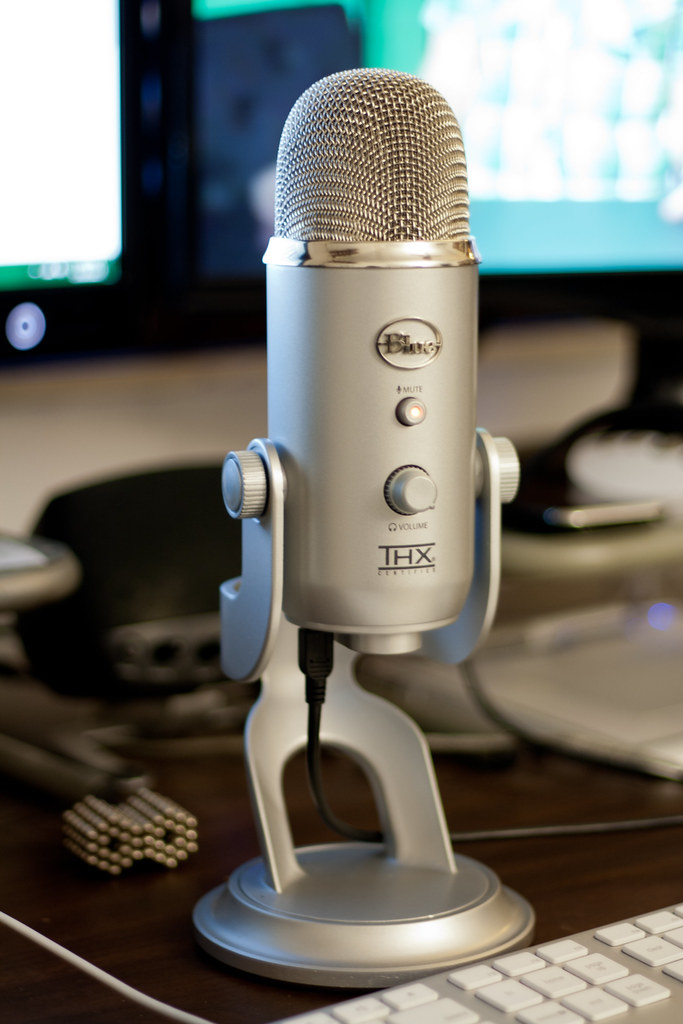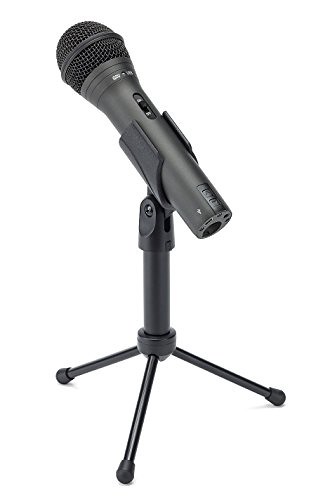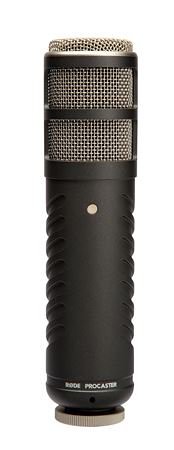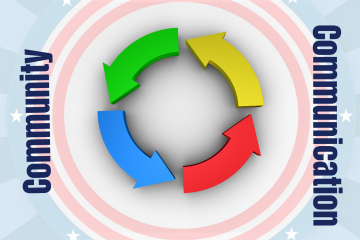It seems that the default podcasting microphone at the moment is the Blue Yeti. I’m really not sure where this received wisdom comes from and I suggest that it hasn’t come from people who know a great deal about podcasting from home. [Stands back for deluge of contrary opinions.]

Please don’t misunderstand me – the Blue Yeti is a great-sounding mic and it looks amazing but it’s a condenser which means it’s very sensitive and can be hard to use in a home recording situation.
My comments below actually apply to a wide variety of different condenser microphones, not just the Blue Yeti but every time I speak to a prospective podcaster, they seem to think the Yeti is the ‘only’ choice.
I recently edited audio from a Blue Yeti user. I could hear background noise very clearly – breathing, rustling clothes, people moving about in the background and even, to my amazement, the ticking of the speaker’s wrist watch!
Here are the problems:
You need to get your mouth close to the Yeti to avoid picking up too much background noise and then your ‘P’s and ‘D’s ‘pop’ much more easily (popping means blasting air into the microphone). This makes you sound less professional, despite having spent a lot of money on the mic. So you need a pop filter and the best one to use is Blue’s own which is pricey.
It can also be rather tricky to get the Yeti into a comfortable position for recording. It’s a side-address microphone (you might be surprised how many people don’t realise that) and it’s very heavy indeed. It has a stand but it’s not fully adjustable so if the height doesn’t suit how you want to place it, you’ll need another stand. The best are angle-poise, boom-arm stands. The weight of the Yeti means you’ll need a heavy-duty boom arm and the best is, again, Blue’s own one – and again, it’s pricey.
The Yeti is a USB microphone, which is great because it’s plug and play on pretty much every computer in existence. However, if you ever wanted to upgrade to using a sound mixer for your podcast recordings or use the mic with professional audio equipment, you will have problems. The professional XLR connection-type isn’t compatible with USB unless you buy other conversion kit. This means that you might need to purchase a different microphone later on in your podcasting journey.
Blue Yeti’s secret polar pattern settings
Another trick many people miss is that the Yeti has a special switch which changes it between:
- Cardioid
- Bidirectional
- Omnidirectional and
- Stereo
If you are scratching your head about what these might mean, I don’t blame you! Omni and Bidirectional are fairly easy to guess – Omni means it will pick up sound from all around it and Bi means it will pick up sound mainly from its front and back.
However, what’s the difference between Bidirectional and Stereo? Well, I’ll let you into a secret – I don’t really know and I don’t really care. That’s because I know what you do need to set it to in order to create great audio for your podcast – the only remaining one on the list – Cardioid. This means the microphone concentrates on picking up just the sound that is directly in front of it and it tries to ignore everything else.
Why is this a good thing?
Think about it for a moment. If you have lots of background noise (called noise floor) you want your microphone to pick up mainly your voice and not let lots of other noise in. Unless you have a specially-treated room to record in, Cardiod is the one to choose and here’s the Yeti magic selector.
I have a client who uses her Blue Yeti brilliantly. It gives her excellent sound with minimal background noise. She records in a quiet room, knows how to adjust the settings and uses great mic technique – so it IS possible.
Blue Yeti Pros and Cons
I was recently asked to set out the advantages and disadvantages of the Blue Yeti for home podcasting. This is an edited version of what I came up with, as a summary of the points above:
| Pros | Cons |
|---|---|
| Great-sounding microphone if you know how to use it. | Condenser microphone rather than a dynamic microphone – you need a pop filter and the best one to use is Blue’s own, which is pricey. |
| Looks amazing – beautiful design of microphone and stand. | Difficult to place in the best position for recording – its stand is not adjustable so you’ll need another one. The best is Blue’s own one – and again it’s pricey. |
| A variety of polar pattern settings – it’s a very flexible mic for lots of different situations. | A variety of polar pattern settings – you need to know which one to use for what situation and arrange people accordingly. |
| USB microphone – simple to set up and go! | USB microphone – if you ever wanted to upgrade to a sound mixer or use the Yeti with professional audio equipment you will have problems. Other kit may well use the professional XLR connection-type. |
So what mic do you recommend instead for home podcasting?

Although it doesn’t look anything like as good as the Blue Yeti, the Samson Q2U is a great microphone which suits podcasting brilliantly. Many seasoned veterans use this microphone which can adapt to your changing needs much better than the Yeti.
Comparing the Yeti to the Q2U, here are some advantages of the less glamorous mic:
- It’s cheaper
- It’s dynamic so it typically doesn’t pick up as much background noise
- It doesn’t need another stand (although the one which comes with it isn’t fantastic)
- It has both USB and professional XLR connections so you can use it in a variety of recording set-ups and you don’t need to buy a new microphone as you develop
- It doesn’t have the complexity of changing polar pattern settings
- It sounds great
In my experience you need to be careful of the USB connection on the mic because it can be a bit fragile but on the whole, it’s a fantastic microphone.
If you have a bit more money to splash out, I’d also recommend the Rode Podcaster which is a fabulous microphone and seems to be easy to get a great sound out of. It’s not my first choice because of its cost and the fact that it’s a USB mic but it’s a very good choice apart from that.

Overall
So, if you can get a Blue Yeti or any other condenser microphone to work for you, that’s great – your podcast will sound really good. However, if you have a bit of noise around where you record and you can’t retreat to a walk-in wardrobe, I’d go for a Samson Q2U. It will sound professional and you can keep it throughout your podcasting journey.
Do let me know what you think.

If you are ready to start or improve your own podcast, you can sign up for a Power Hour with me here.
I look forward to working with you!

0 Comments